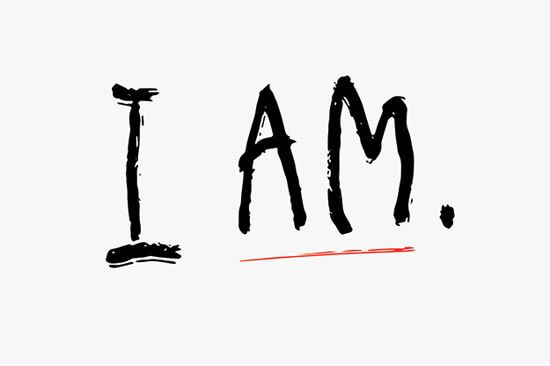Sense of “self” is just one among a constellation of mental states, and the experience of “I” varies considerably. “I” is described by some neurologists as a stable form of hallucination, which is to say, a subjective experience of being “in here” that seems to feel separate from things and people “out there.” The hallucination is enhanced by cultural artifacts — language, ideas and concepts — that reinforce belief in an external, objectified world, combined with a powerful inclination to make distinctions and divide the world into dichotomies.
Dichotomies of “I”/”other,” “good”/”bad,” “true”/”false,” and so forth all contribute to how we imagine the nature of external reality. Moreover, such mental concepts are linguistic; language itself forms the matrix out of which we construct conceptions of ourselves. This self-definition is confined within the limits of the language from which it arises.
Neurologically, our brains contain tens of billions of cells, and the connections between them are in the range of 1022, or more connections than there are known stars in the universe. How consciousness develops remains a mystery; consciousness may be built into the fabric of the universe itself, and considering entanglement observed in quantum mechanics, could even be a non-local phenomenon. What we imagine as “I” could be Einstein’s “spooky action at a distance”: the universe examining itself.
We classify the maintenance of “I” as normal, or what we call sanity, and designate other mental states as abnormal, or insane. These other states are commonly manifestations of hyper- and hypo-arousal: ecstasy at the pole of hyper-arousal and equanimity at the opposite pole of hypo-arousal. We actively seek out these “abnormal” states; artistic creation, religious ritual and the use of psychoactive substances all indicate the strong attraction such mental states have for us, from the extremes of religious ecstasy and psychedelics to meditation and the calm of sedatives. The maintenance of “I” can be viewed as a stable position of psychic “freedom” located midpoint within the broad spectrum of hyper- and hypo-arousal.
The “freedom” of the experience of “I” is so-called due to its seeming isolation from the intrusion of the underlying substrata of brain activity, what we call the unconscious. While experiencing “I” we are generally freer from awareness of the cascading flood of feelings, associations, thoughts and imaginings continuously emanating from our unconscious; this freedom is akin to a form of amnesia, similar to that we experience after awakening from dreams then forgotten. Stimulants, sedatives and peak experiences alter brain chemistry enough to tip us from the stable “freedom-of-I” into the turbulent, streaming tide of the unconscious. It feels exciting, even dangerous, to loosen our attachment to “I,” yet it is precisely the experience through which we often dissolve the hallucination of separation and make contact with the primordial unity that spiritual teachers, great artists, physicists and cosmologists report.
Recent discoveries in neurology indicate that while awake, our brains function in a state of “criticality,” balanced between chaos and order. Criticality is observed in other physical structures, where reaching a “tipping point” produces new structures of order out of chaos, just as a single snowflake triggers the chaos of an avalanche that ultimately results in a newly stable arrangement. Accordingly, the “I” we imagine manifests as a stable position of order amid the actively chaotic avalanche of the unconscious.
So, knock-knock. And, who’s there?








The teacher would say that we only see our selfish face in the glassy mirror, to see our true self we must look into the mirror of space. Critical mass feels near, does it all have to come down … stability is in mind.